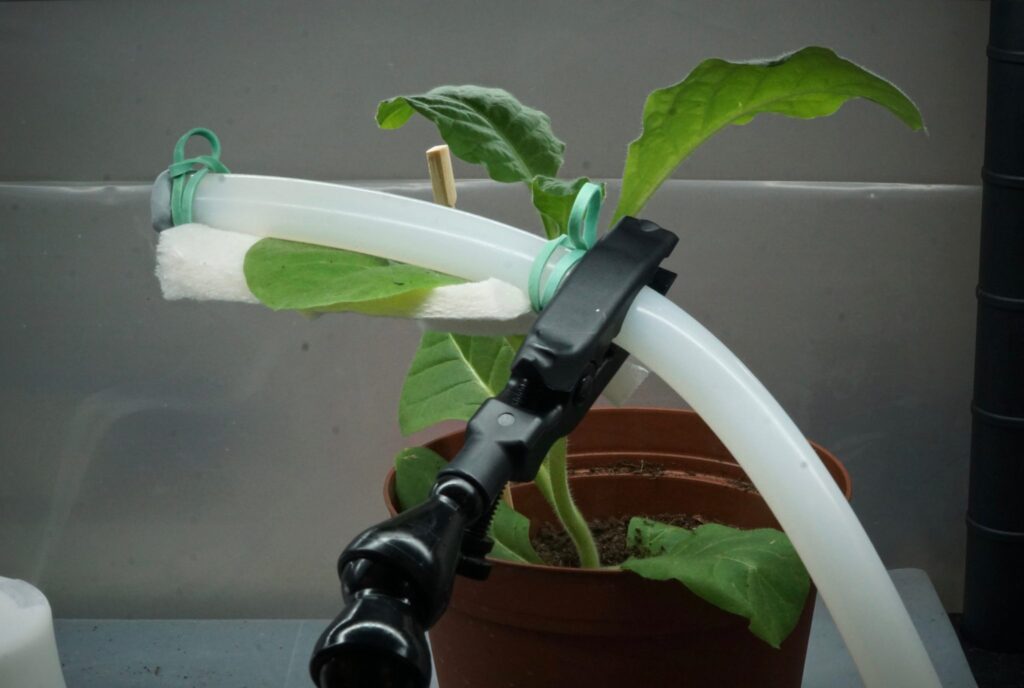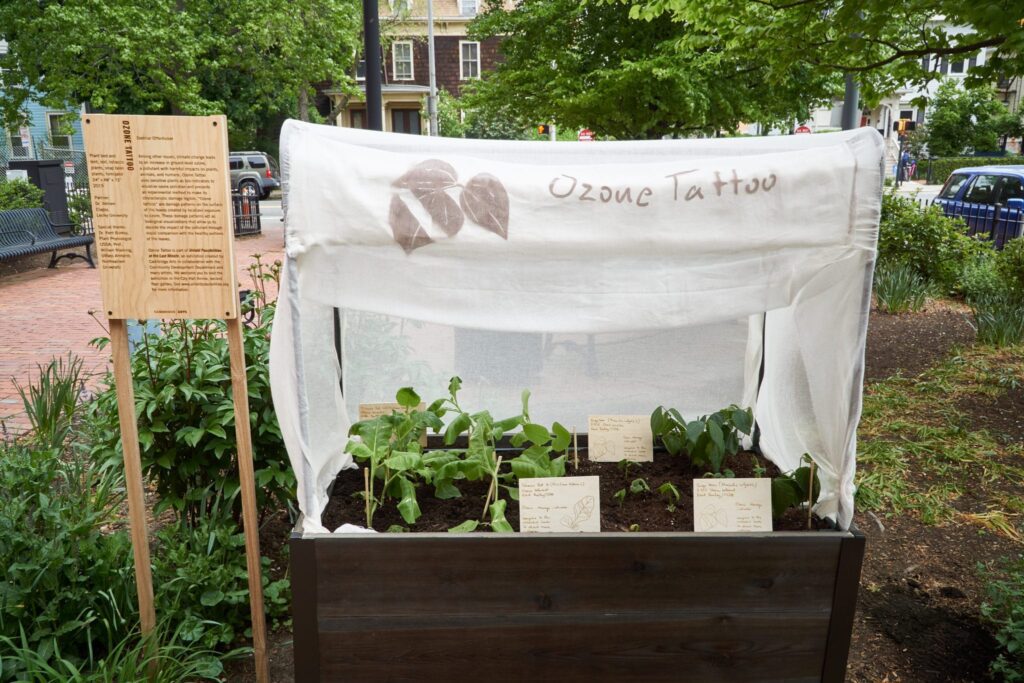
Partners: Dr. Vehram Elagoz, Lesley University, Dr. Kent Burkey, USDA ARS Maryland
Among other issues, climate change leads to an increase in ground-level ozone, a pollutant with harmful impacts on plants, animals, and humans. Ozone tattoo is an autographic visualization project that uses ozone-sensitive plants as bio-indicators to visualize ozone pollution. Ozone tattoos are damage patterns on the surface of the leaves created by localized exposure to ozone. These damage patterns allow decoding the impact of the pollutant through visual comparison with the healthy portions of the leaf.
The project is based on the established citizen science approach of planting ozone gardens, which allow communities to monitor pollution by observing plants that are sensitive to ozone. One of the indicator plants used in the project, the tobacco plant, has historical significance for Massachusetts and its history of industrialization. Until the early 1920s, western Massachusetts was a center of tobacco production, the source of high-quality cigar wrappers. One factor that ended this thriving industry was the adverse effect of ground-level ozone resulting from industrialization. Tobacco plants are highly sensitive to ozone and show visible damage already at low concentrations. This sensitivity makes the plants an excellent bio-indicator that is often used in ozone garden projects.
Paper – Dustmarks and Ozone Tattoos: Autographic
Displays of Air Pollution (VISAP 2019)


